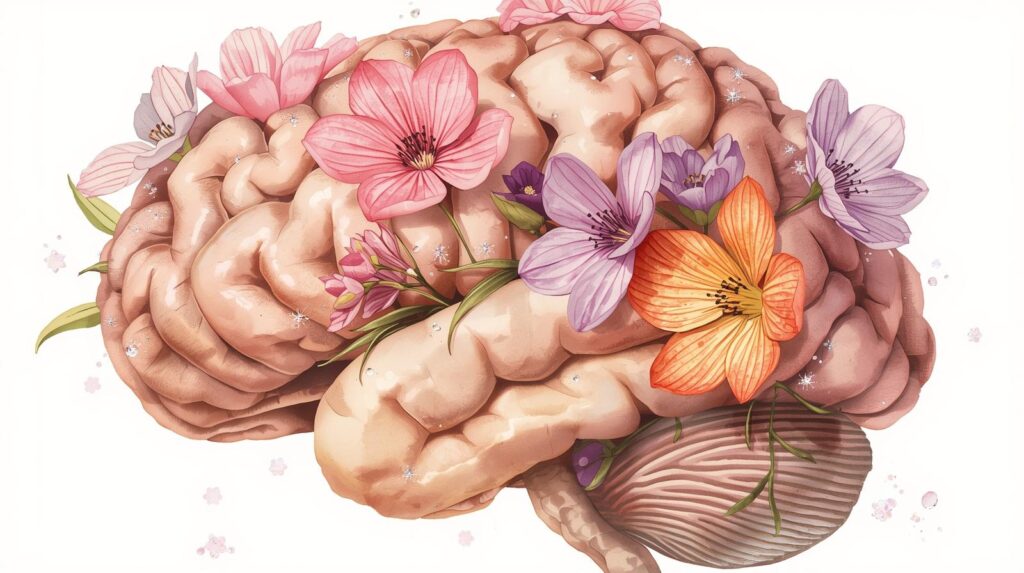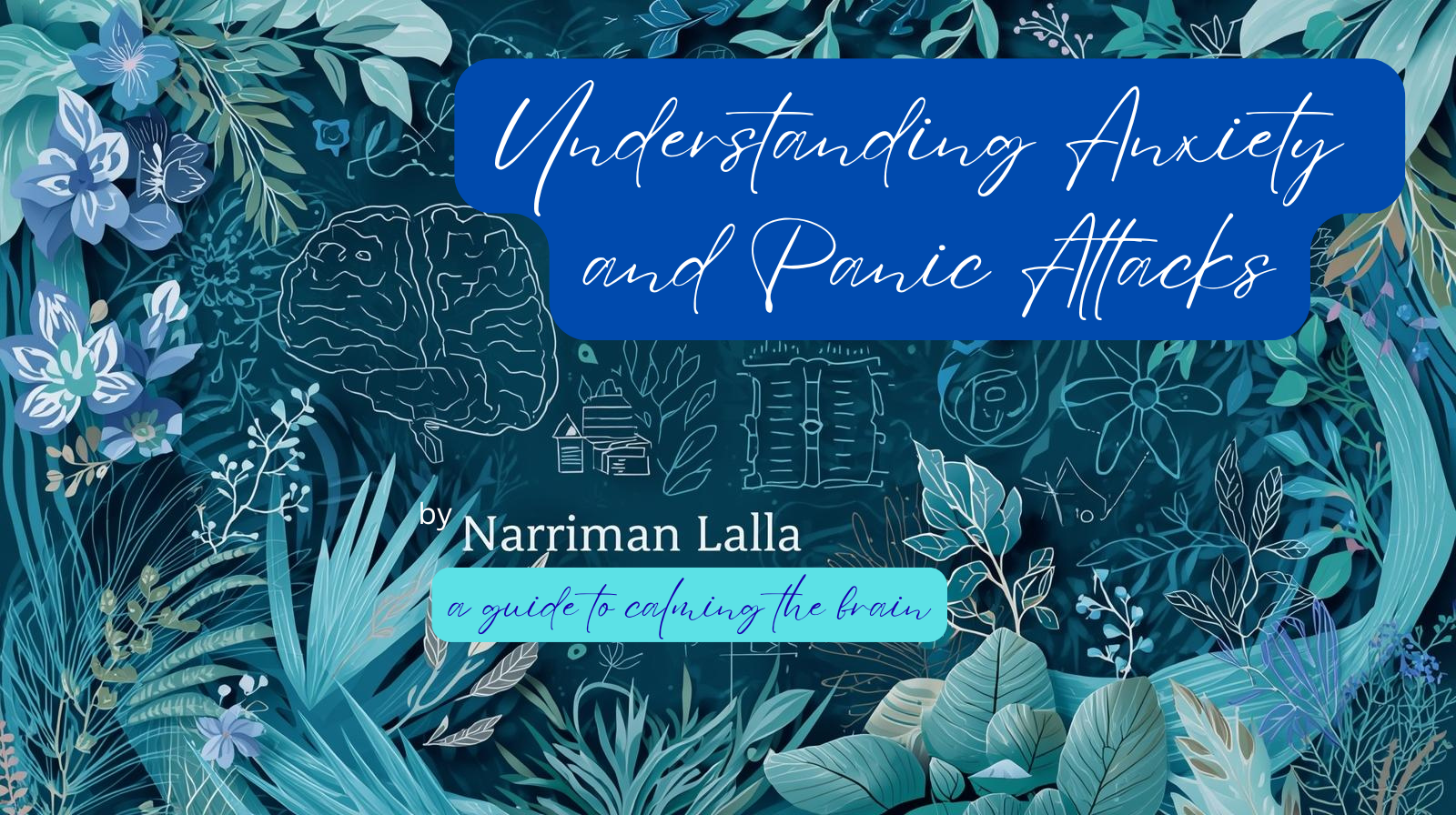Your cart is currently empty!
How to Calm Anxiety: Techniques Backed by Neuroscience
The Neuroscience Behind Anxiety and Panic Attacks
Anxiety and panic attacks are not just emotional reactions — they are neural events. Your brain, in its attempt to protect you, sometimes mistakes safety for danger.
At the heart of this process is a tiny almond-shaped structure called the amygdala, your brain’s internal alarm system. When the amygdala detects a potential threat, it sends signals to the hypothalamus, activating the sympathetic nervous system — the body’s “fight-or-flight” response.
This triggers the release of stress hormones like adrenaline and cortisol, causing the familiar symptoms of anxiety and panic:
- Racing heartbeat
- Tight chest or shortness of breath
- Dizziness
- Muscle tension
- Sweating or trembling
Your body believes it’s in danger, even if your mind knows there’s no real threat. This is what neuroscientists call a false alarm response.
Table of Contents
What Happens During a Panic Attack
During a panic attack, the amygdala becomes overactive, flooding the body with emergency signals. Meanwhile, your prefrontal cortex — the rational, thinking part of your brain — goes temporarily offline.
This explains why logic or reasoning doesn’t help much in the middle of panic. The body is simply doing what evolution trained it to do: protect you.
But here’s the hopeful part:
Just as the brain can learn to panic, it can also learn to stay calm. This is where neuroscience offers powerful, practical tools to reduce anxiety naturally and regain control.
How to Reduce Anxiety Naturally — Backed by Neuroscience
1. Breathe Slowly to Calm the Brain
Why it works:
Deep, slow breathing activates the vagus nerve, which connects your brain to your heart and lungs. When the vagus nerve is stimulated, it sends a signal back to your brain saying, “We’re safe.”
Try this technique:
The 4-2-6 method
- Inhale through your nose for 4 seconds
- Hold your breath for 2 seconds
- Exhale slowly through your mouth for 6 seconds
Repeat this for at least 3–5 minutes. The long exhale slows your heart rate and rebalances your nervous system, reducing cortisol levels.
🧠 Neuroscience insight: Research shows that controlled breathing increases vagal tone, improving emotional regulation and reducing anxiety long-term.
2. Label What You Feel — It Soothes the Amygdala
Why it works:
When you name your emotions (“I feel anxious,” “This is panic”), the prefrontal cortex re-engages, and amygdala activity decreases.
This is known as affect labeling, and brain imaging studies show it helps calm emotional overreaction.
Try this:
Say to yourself:
“This is anxiety. My body is reacting to protect me. I am safe.”
This simple sentence reconnects logic and emotion, helping you ground yourself during moments of panic.
3. Ground Yourself in the Present Moment
Why it works:
Anxiety lives in the future — in the “what ifs.” Grounding exercises bring your attention back to the present, calming the sensory and motor networks that are overactivated during panic.
Try the 5-4-3-2-1 method:
- 5 things you can see
- 4 things you can touch
- 3 things you can hear
- 2 things you can smell
- 1 thing you can taste
This sensory redirection pulls you out of your thoughts and into your body, activating the parietal lobe — the part of your brain that orients you in physical space — and reducing emotional distress.
4. Relax Your Muscles to Signal Safety
When you’re anxious, your muscles tighten as if preparing to fight or flee. By consciously relaxing them, you send a message of safety to your brain.
Try this progressive relaxation:
- Start at your toes. Tense them for 5 seconds, then release.
- Move up to your calves, thighs, abdomen, shoulders, face.
- Exhale deeply after each release.
This technique reduces activation in the sympathetic nervous system and enhances parasympathetic activity, the state of rest and recovery.
5. Reframe the Sensations — Fear to Safety
Your physical sensations during anxiety are not dangerous — they’re protective.
Instead of resisting them, reinterpret them as your body doing its job.
Example reframes:
- “My heart is racing because my body thinks I need energy.”
- “This dizziness is from breathing too fast. I can slow it down.”
- “I’m safe, even if my body feels on alert.”
This cognitive shift strengthens the neural pathway between your prefrontal cortex (logic) and amygdala (emotion), reducing panic over time.
6. Train Your Brain with Consistent Calm
Your brain changes through neuroplasticity — repeated experiences shape new neural pathways.
Every time you calm yourself after anxiety, you weaken the fear circuits and strengthen the calm ones.
Daily practices that rewire the anxious brain:
- Mindful breathing: even 5 minutes daily changes brain connectivity.
- Regular exercise: boosts serotonin and BDNF (Brain-Derived Neurotrophic Factor), which improve mood and neural growth.
- Meditation: increases grey matter in the hippocampus (emotional regulation).
- Sleep: essential for restoring balance between the amygdala and prefrontal cortex.
- Balanced nutrition: omega-3s, magnesium, and complex carbs help regulate neurotransmitters.
🧩 Remember: The goal is not to eliminate anxiety but to teach your brain that it can return to calm safely and quickly.
How to Stop a Panic Attack in the Moment — Step-by-Step
- Recognize what’s happening: “This is panic, not danger.”
- Exhale longer than you inhale. Focus on the breath leaving your body.
- Ground yourself: Name objects, colors, or sensations around you.
- Soften your muscles: Drop your shoulders, unclench your jaw.
- Stay present: The wave of panic always passes within minutes.
By staying with the sensations instead of fighting them, you prevent the amygdala from re-firing and shorten the attack’s duration.
Retraining the Brain to Stay Calm
With patience and consistency, you can retrain your brain to interpret stress differently.
Neuroscience shows that anxiety reduction is not just emotional healing — it’s neural rewiring.
Over time:
- The amygdala becomes less reactive.
- The prefrontal cortex grows stronger in regulating emotion.
- The vagus nerve becomes more responsive.
- Your baseline stress level decreases.

You’re not suppressing anxiety — you’re teaching your nervous system what peace feels like.
Final Thought: Your Brain Can Heal
If you struggle with anxiety or panic attacks, know this:
Your brain isn’t broken — it’s overprotective. With every breath, every moment of awareness, you are teaching it a new story:
“I am safe now.”
The same brain that learned fear can learn calm.
And each time you breathe through the storm, you’re sculpting new neural pathways of peace — one moment at a time.

Leave a Reply